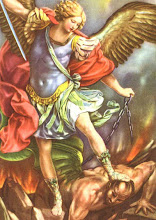A review of Laurence Gardner's The Magdalene Legacy
--------------------------------------------------------------------------------
by
"Punkish"
|http://www.tektonics.org/books/maglegrvw.html
I don't need to say much about this one, which is mostly a rewrite of Gardner's previous book Bloodline of the Holy Grail. If you own that, I don't advise you part with your money on this as well. It also explores the same premise: it supposes Jesus was married - to Mary Magdalene of course.
A quick look at the bibliography is quite revealing: John Allegro, Baigent and Leigh, Rudolph Bultmann, Dupont-Sommer, Robert Eisenman, Riane Eisler, Knight and Lomas(!), G.R.S. Mead, Ahmed Osman, Morton Smith's Secret Mark, Barbara G. Walker(!!) and some of Gardner's previous books and other oddball or outdated works for sources. To be sure there are gems of scholarship as well, such as Michael Grant, but the combination is hardly satisfactory.
No Laurence Gardner book would be complete without the obligatory uncritical overuse of Barbara Thiering (whose work Jesus the Man is described as "the finest work for describing precisely how the Essene scribal codes work in practice"!, 315) or mention of the pretender Michael of Albany. Basically this is a compendium of Gardner's bad methodology and argumentation from his previous books stuffed into a single volume. Actually the book deals more with art and allegory than hard data.
There are some real howlers in this book - two examples should suffice:
He has Mary Magdalene performing something related to a pagan rite with Jesus! [158] Why would Jesus, a Jew, submit to such a thing?? This is not explained. (His sources for this claim: Margaret Starbird, who uses sculptor and art-history professor Merlin Stone; and Barbara G Walker, whose source dates from 1901!)
If you thought that was bad; try this, it is just amazing how Gardner can so misread a passage and interprets it exactly the opposite way as presented in the book. The passage reads:
And if a man have committed a sin worthy of death, and he be put to death, and thou hang him on a tree, his body shall not remain all night upon the tree, but thou shalt in any wise bury him that day. (Qumran Temple Scroll) [127]
Gardner applies this to the events of the Crucifixion (may we ask what sin Jesus committed?) - even having Joseph of Arimathea supposedly getting Pilate to change how Christ is being executed to fit with the law in Deuteronomy 21:22-23 [126], as if Pilate would allow such a thing) and - this is the amazing part - interprets the scroll's last phrase as meaning "the alternate Jewish custom of burial alive"! Burial alive? The text's second line says "put to death", does it not? Further, Pilate, in Mark 15:42-45 asks for the centurion's confirmation that Jesus was dead. This is either a bizarre misreading or a deliberate attempt to push through a theory regardless of contrary data! (The theory being the vastly outdated swoon theory refuted by D F Strauss in the 1830s!)
He then goes on to claim the old canard that the accounts of the Resurrection are "very confusing". All miraculous gospel events are interpreted as non-supernatural in some way or other. Quoting a Dominican friar who thinks faith and evidence are two separate things. Uncritical use of Gnostic texts. The "Son of man" title means "a human being" [345 and he doesn't deal with Daniel 7 at all]. The usual stuff. The usual place for storage: the round filing basket.
Gardner also demonstrates he cannot do mathematics. [365] The circle-ratio constant pi is not equal to 3.1416! Nor is it constructed out of formulae using rational fractions. (That one was disproven in 1761!) I realise this is non-central to the book's thesis but if he cannot present indisputable facts properly why should his theories be believed?
Despite these errors in scholarship the book does have one interesting feature: its criticisms of Dan Brown's fictional novel, The Da Vinci Code. Now Gardner, before he turned his hand to writing the Holy Bloodline series, was an art restorer; hence he is qualified to discuss the da Vinci painting of the Last Supper, indeed showing Brown's book to be incorrect by relying on outdated information about the painting; information which was available at the time Brown wrote his novel! [266] There's also a chapter on the Priory of Sion, in which Gardner pegs Brown for more errors despite acknowledging the Da Vinci Code is a work of fiction.
And so, again, Laurence Gardner's conspiracy-based work is to be considered a waste of time - except for the novel entrance of some critical thinking which is to be encouraged; whether this will be applied by Gardner in future works (or even by fellow bloodline theorists) - instead of the par-for-the-course uncritical lunacy - remains to be seen.
lunedì 28 gennaio 2008
Iscriviti a:
Commenti sul post (Atom)







Nessun commento:
Posta un commento